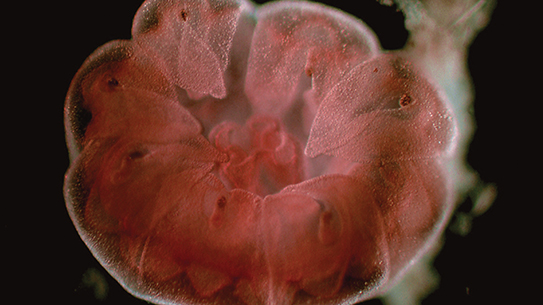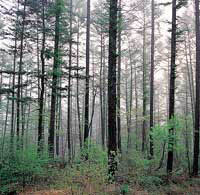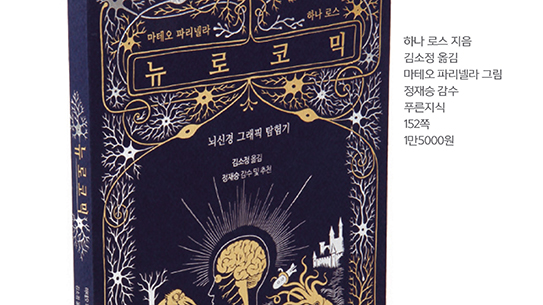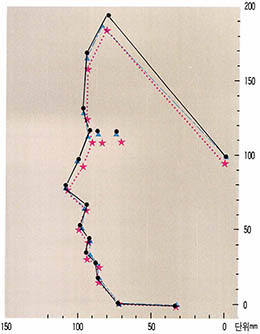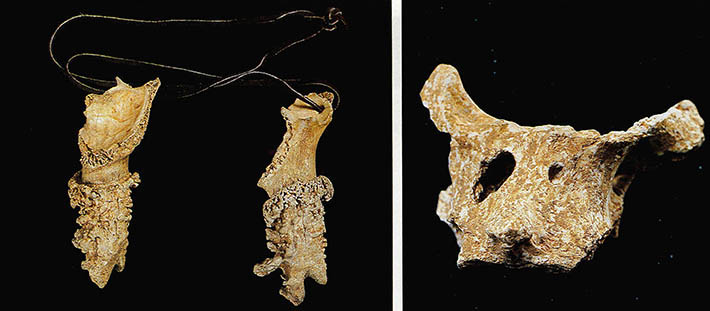산성비라고 해서 모두 나쁜 것은 아니다. 유용한 종류가 있을 뿐만 아니라 대지의 생명을 보존하는 중요한 역할을 담당하는 것들도 있다. 그리고 최근의 실험들은 어떤 산성비는 우리가 생각했던 것보다도 훨씬 더 생명을 줄수 있는 것으로 보이게끔 했다. 산성비의 기능에 관한 얘기를 하겠다.
모든 살아있는 조직에 필수적인 분자로 발견되는 가장 중요한 원소중의 하나가 질소이다. 질소원자는 질산염으로 불리우는 광물질의 일부로 토양에 존재한다. 질산염은 한결같이 쉽게 녹는다. 이는 식물이 토양에서 물을 흡수할 때 물은 소량의 질산염을 함유하고 있다는 것을 뜻한다. 식물은 생명에 중요한 질소함유복합체, 특히 단백질과 핵산의 형성을 위해 질산염을 원재료로 사용한다.
식물을 먹는 동물들(또는 식물을 먹고사는 동물을 잡아 먹는 동물들)은 이들 단백질과 핵산을 보다 단순한 물질로 분해, 흡수해서 각기 특수한 단백질과 핵산으로 재 구성한다.
지상의 모든 생명은 토양에 있는 질산염에 의존하고 있는 것이다. 그러나 질산염은 용해성이 있으므로 비가 그들을 개울로, 강으로 그리고 마침내 바다로, 씻겨 내리곤 한다. 머지않아 모든 질산염이 사라질지도 모르며 생명은 질산염이 모이는 해양에서 지속되는 반면, 육지는 완전한 사막이 되어 버릴 지도 모른다. 만약 질산염이 다시 채워지지 않는다면, 지구대기의 5분의 4는 순수한 질소이다. 만약 이들 질소의 약간량이 '고정'될 수 있다면, 즉 다른 원소들과 결함될 수 있다면, 이는 식물에 의해 이용될 수 있을 것이다. 하지만 질소는 워낙 쌀쌀맞은 원소여서 다른 원자들과 결합하기가 무척 어렵다.
그러나 질산염은 여전히 토양에 존재하고 다시채워진다. 어떻게? 한가지는 인간은 질소를 다량으로 고정시키는 법을 배워왔고 그결과 생기는 질산염이 비료로써 사용될 수 있었다. 그러나 이는 최근의 일이다. 약 4분의 3세기 전에서야 개발된 것이다. 그렇다면 그전에는 어떻게 생명이 견뎌내왔을까?
공교롭게도 공기중의 질소를 다른 원자들과 결합시키는 비상한 능력을 가진 박테리아가 있다. 그들은 질소고정박테리아로 불리워지며 특히 완두콩이나 콩같은 콩과(科)식물의 뿌리에 붙어사는 작은 혹에서 발견된다. 그러한 박테리아는 일반적으로(우리를 포함하여) 생명유지에 대단히 중요하다.
그리고 또 번개가 있다. 번개가 공중에서 한번 번쩍일 때마다 순간적으로 그 주위공기는 엄청난 고온으로 올려놓는다. 순식간에 공기는 다시 냉각되지만 그렇게 되기 이전에 열이 질소분자와 산소분자를 공중에서 결합시켜 이산화질소를 만들어버린다. 이것이 물에 녹아(보통 이때 비가 내리고 있다) 질산이 만들어지며 일종의 산성비를 뿌린다. 질산이 땅에 도달할때 질산염으로 전환되고 토양을 비옥하게 해주며 토양이 생명을 지니도록 해준다.
최근까지 번개가 토양질산염의 약 10%를 감당하고 있다고 여겨졌다. 이러한 수치는 실험실에서 모의(模擬) 번개방전실험이 만들어 낸 결과를 조사함으로써 얻어진 것이다.
2명인 미국인 과학자 에드워드 프란츠블라우와 칼 포프는 이제 뉴멕시코 '광산기술연구소'의 실험실로부터 자연 그대로를 활용하는 실험을 하고 있다. 최근에 그들은 뇌우(雷雨)중에 실제의 번개로 인해 생성되는 이산화질소의 양을 계산하는 방법을 고안해내었다.
60번의 번개를 조사한 후 그들은 매번의 번개방전이 이산화질소 약 ${10}^{27}$개를 만드는 것으로 계산하였다. 이는 대략 1백10파운드의 무게에 해당된다. 평균잡아 1초당 약 1백번의 번개가 지구를 내려친다. 이는 번개가 1초에 산화질소 5½톤을 생산한다는 것을 의미한다.
프란츠블라우와 포프는 번개가 생명체가 소비하는 산화질소의 10%가 아닌 50%정도를 지구에 공급한다는 것을 계산한 것이다.
그것은 그리 나쁜 일은 아니며(언제나 그들의 관측과 결과가 그대로 유지되며 정확한 것으로 알려진다고 추측하면서) 확실히 우리에게 번개에 대한 새로운 시각을 제공해준다. 사람을 죽이고 숲에 불을 내는 번개가 위험하기는 하다.
하지만 번개는 그 재난을 보상하고도 남을 훨씬 많은 선행을 행하고 있음이 틀림없는 것같이 보인다.
그러나 만일 번개에 의해 만들어지는 산성비가 그토록 생명체에 필수적이라면 왜 '산성비'라는 표현이 그렇게 무서운 것으로 변해버렸을까?
왜 그것은 살인자가 되어야만 했을까?
그 이유는 우리가 두려워하는 산성비가 황(黃)원자와 질소원자를 모두 포함하는 불결한 석탄과 석유의 연소에 의해 발생되기 때문이다. 인공적인 산성비는 질산과 마찬가지로 황산도 함유하고 있다. 황산은 특히 해로우며 번개로 인한 산성비의 성분이 아니다.
게다가 인공적인 산성비는 번개로 인한 산성비보다도 상당히 산성이 강하다. 그런 산성비가 내라는 곳에서는 상당할 정도로 산(酸)의 과잉공급이 있게 된다. 숲을 시들게하고 연못과 호수의 물고기를 죽이는 것은 이러한 과잉공급인 것이다.
Acid rain isn't always bad. There are some kinds that are not only good, but that play an active role in preserving land life. And recent experiments have made it seem that some acid rain is even more life-giving than we had thought.
Here's how it works:
One of the important element that is to be found in all the key molecules of living tissue is nitrogen. Nitrogen atoms exist in the soil as part of mineral substances called "nitrates." Nitrates are, one and all, easily soluble. That means that when plants absorb water from the soil, that water contains a little nitrate. The plant uses the nitrates as raw material for the formation of nitrogen-containing compounds of importance to life-notably protein and nucleic acids.
Animals that eat plants (or other animals that have eaten plants) break down those proteins and nucleic acids into simpler building blocks, absorb these and build them up again into their own varieties of proteins and nucleic acids.
All of land life depends on those nitrates in the soil. However, since the nitrates are soluble, rain trends to wash them away into brooks, then rivers and finally the sea. In time, all the nitrates would be gone, and while life would continue in the sea, where the nitrates end up, the land would be become an absolute desert. Unless the nitrates can be replaced.
Four-fifths of Earth's atmosphere is pure nitrogen. If a little of this nitrogen could be "fixed," that is, combined with other elements, it could then be used by plants, but nitrogen is standoffish and combines with other atoms only with the greaest difficulty.
Yet the nitrates still exist in the soil and they are replaced. How? For one thing, human beings have learned to fix nitrogen in large quantities and the resulting nitrates can be used as fertilizer, but this is only a recent thing, and was developed only about three-quarters of a century ago. How did life manage before then?
As in happens, there are bacteria that have the unusual capacity of forcing nitrogen in the air into combination with other atoms. They are called "nitrogen-fixing bacteria" and are found, particularly, in nodules attached to the roots of leguminous plants like peas and beans. Those bacteria are vitally important to life, generally (including us).
And then, there is lightning. Whenever a lightning stroke flashes through the air, it momentarily heats the air around it to unusually high temperatures. The air quickly cools down but before it does so, the heat forces the combination of molecules of nitrogen and oxygen in the air, forming "nitrogen dioxide." This dissolves in water (it is usually raining at the time) to form nitric acid, which produces a kind of acid rain. When the nitric acid reaches the ground it is converted into nitrates, and that helps fertilize the earth and makes land life possible.
Until recently it was thought that lightning was responsible for about 10 percent of the nitrates in the soil. This figure was arrived at by studying simulated lightning flashes produced in the laboratory.
Two American scientist Edward Franzblau and Carl popp, from the New Mexico Institute of Mining and Technology, have now turned to nature itself. Recently, they worked out a method for calculating the amount of nitrogen dioxide formed in actual lightning flashes during thunderstorms.
After studying about 60 flashes, they calculated that each flash produces about a thousand trillion trillion (CQ) molecules of nitrogen dioxide. This is about 110 pounds of the material. And, on the average, about 100 lighting strokes strike the Earth per second. This means that lightning is producing 5 1/ 2 tons of nitrogen oxide per second.
Franzblau and popp calculated that this means that lighting supplies the Earth not with 10 percent of the nitrogen oxide that life consumes, but 50 percent.
That's not bad (always assuming that their observations and calculations are borne out and are found to be correct) and certainly gives us a new perspective on the lighting bolt. Dangerous as the bolts are, killing people and setting forest fires, it would seem that the good they do must far outweigh the evil.
Yet if the acid rain produced by the lightning bolts is so essential to life, why has the expression "acid rain" become so fearful? Why should it be a killer?
That is because the acid rain we fear is caused by the burning of impure coal and oil that contains both sulfur atoms and nitrogen atoms. Human-made acid rain contains sulfuric acid as well as nitric acid. Sulfuric acid is particularly harmful and is not a component of lightning acid rain.
In addition, human-made acid rain is considerably more acid than lightning acid rain. Where it falls there is a considerable oversupply of acid. It is this oversupply that withers forests and kills the fish in ponds and lakes.
(c) 1988, Los Angeles Times Syndicate
이 기사의 내용이 궁금하신가요?
기사 전문을 보시려면500(500원)이 필요합니다.
1988년 09월 과학동아 정보
🎓️ 진로 추천
- 생명과학·생명공학
- 환경학·환경공학
- 화학·화학공학







